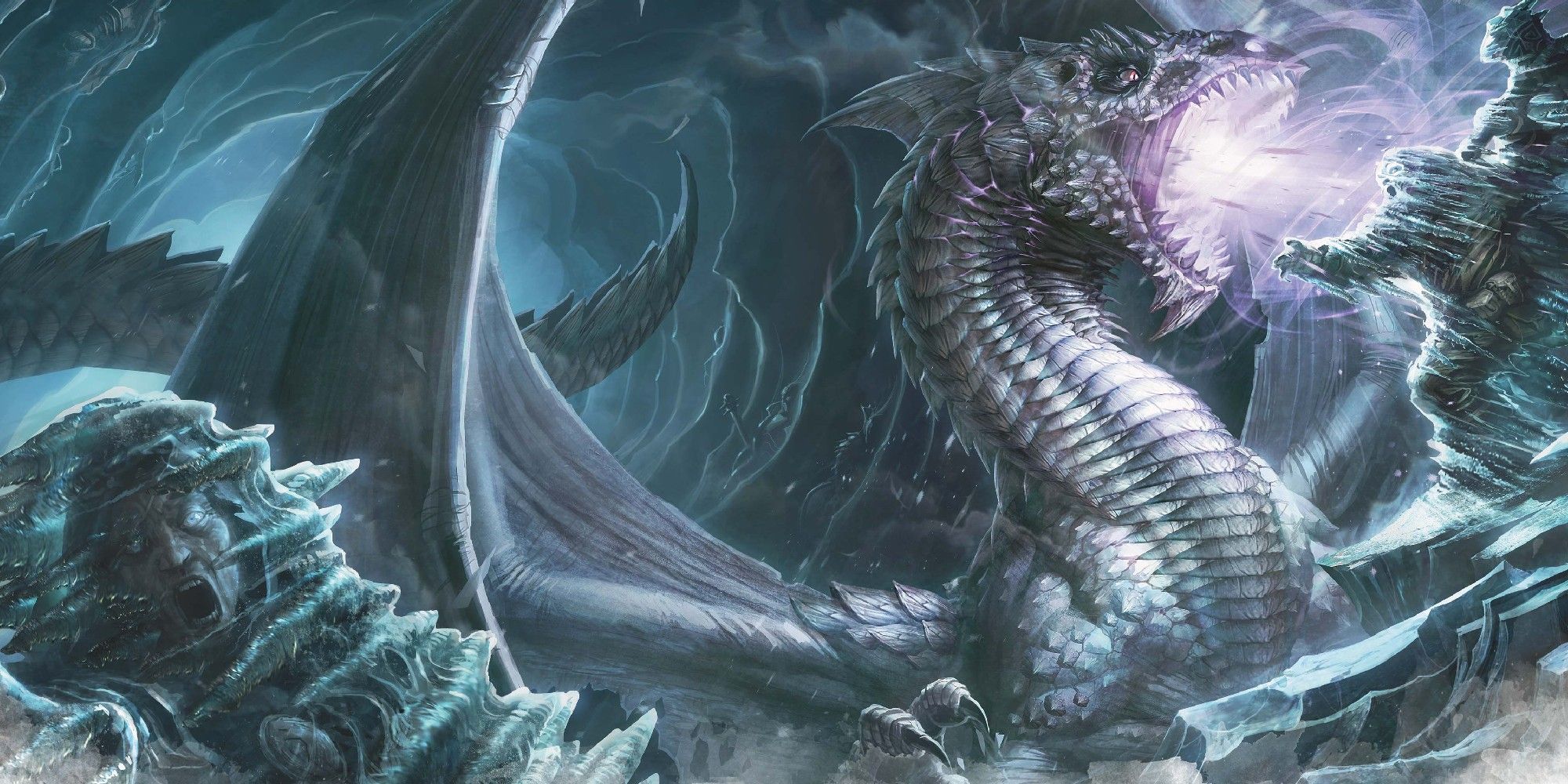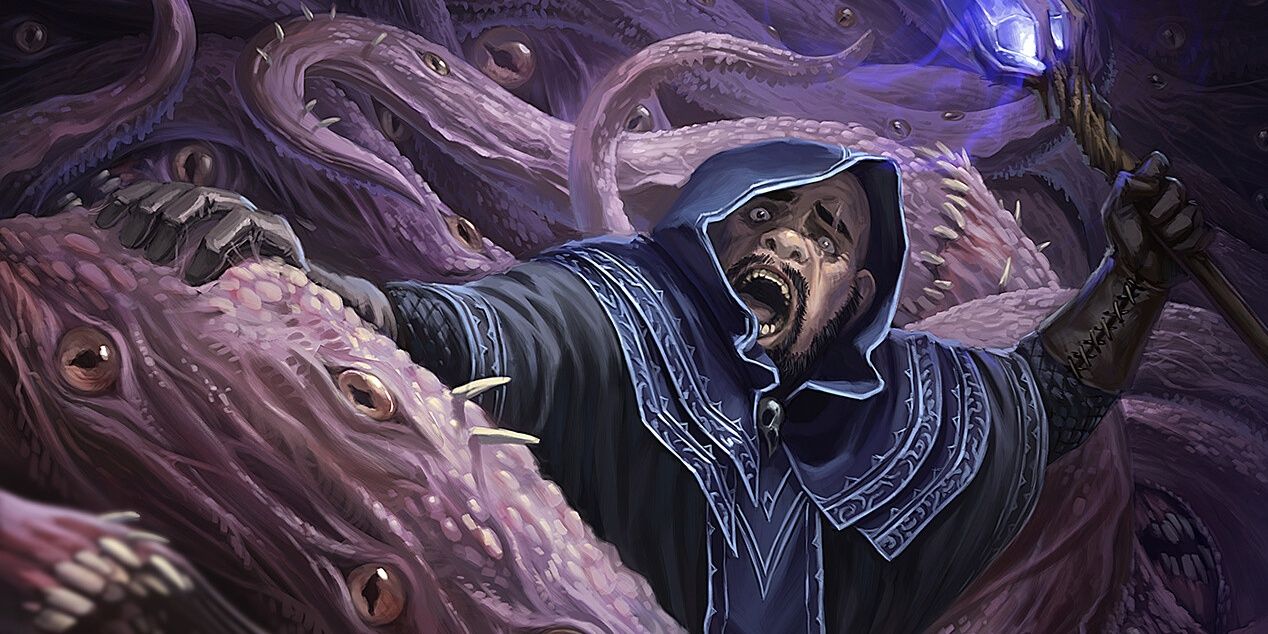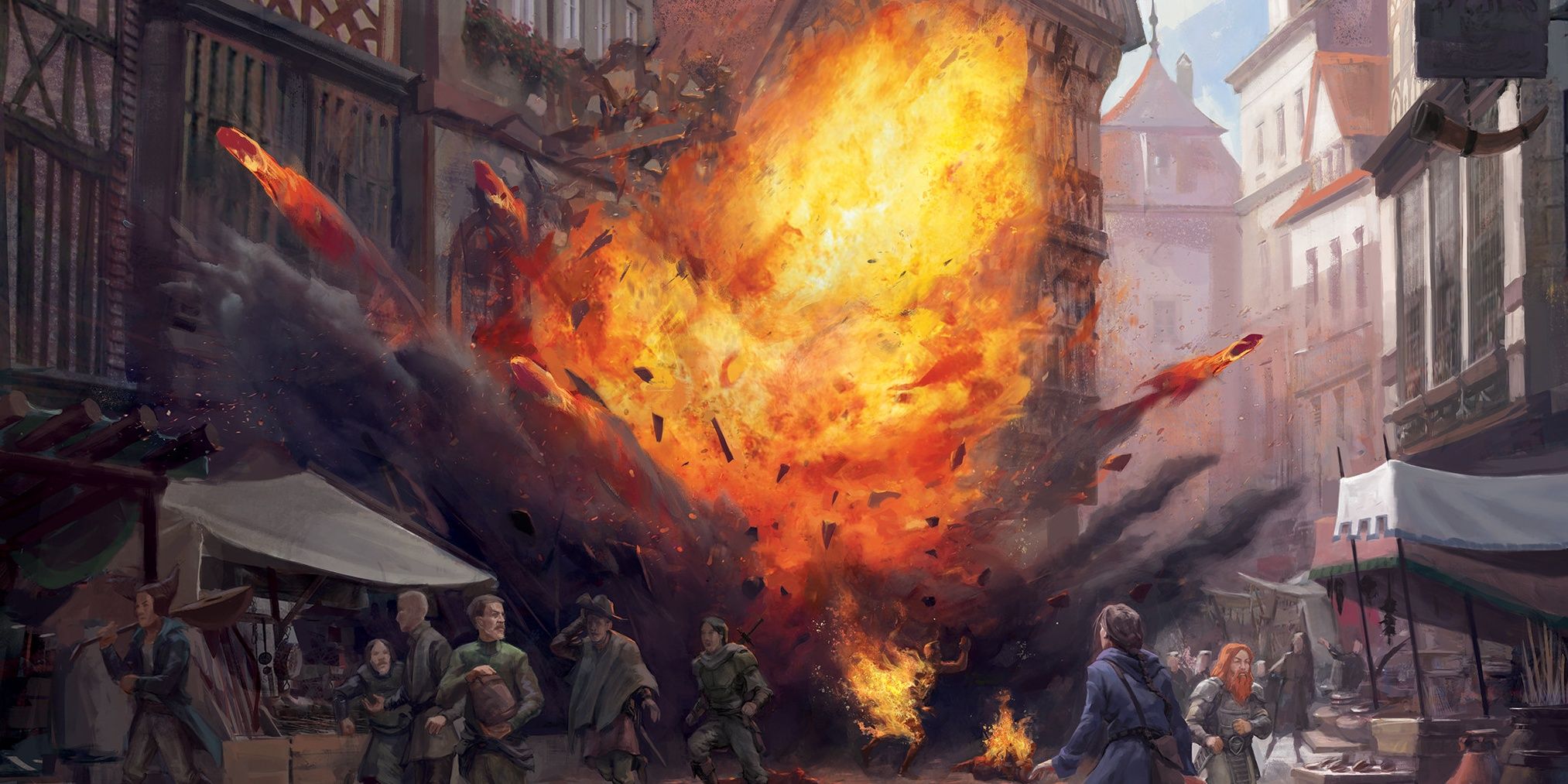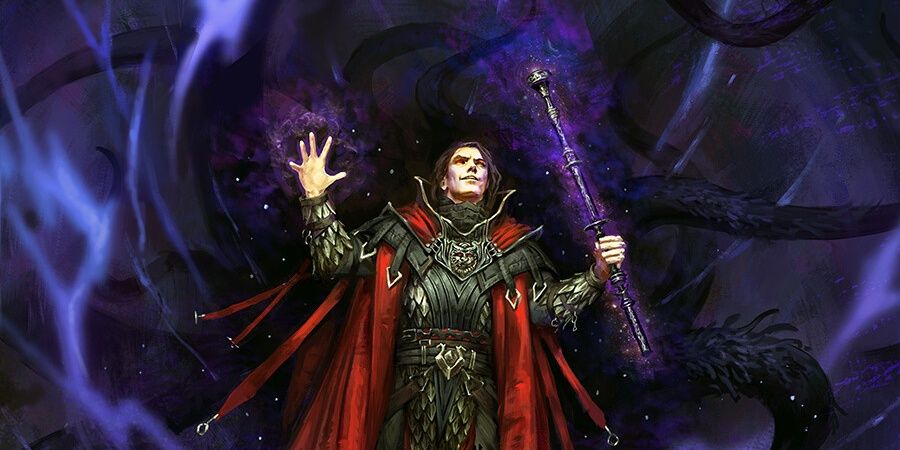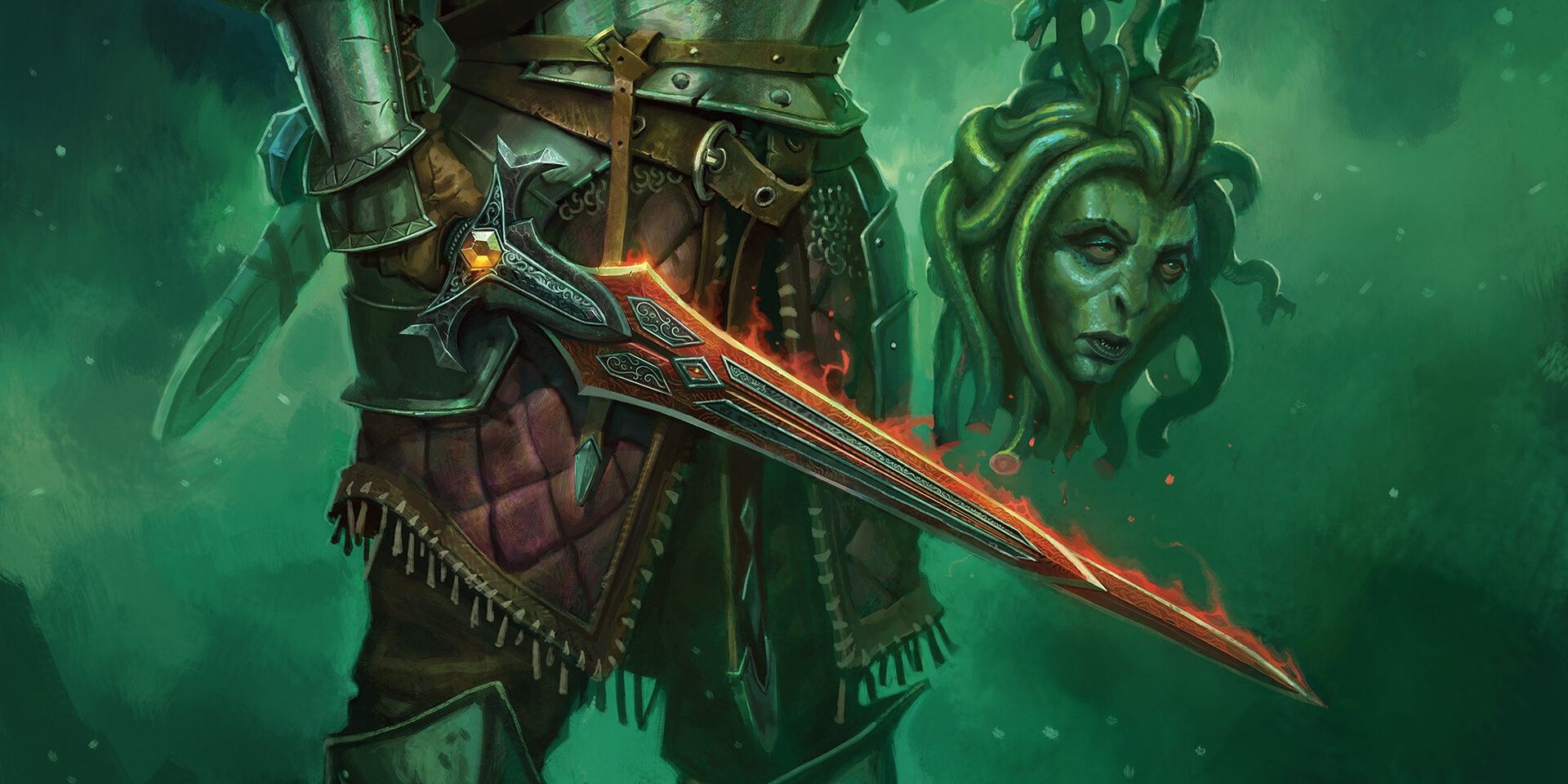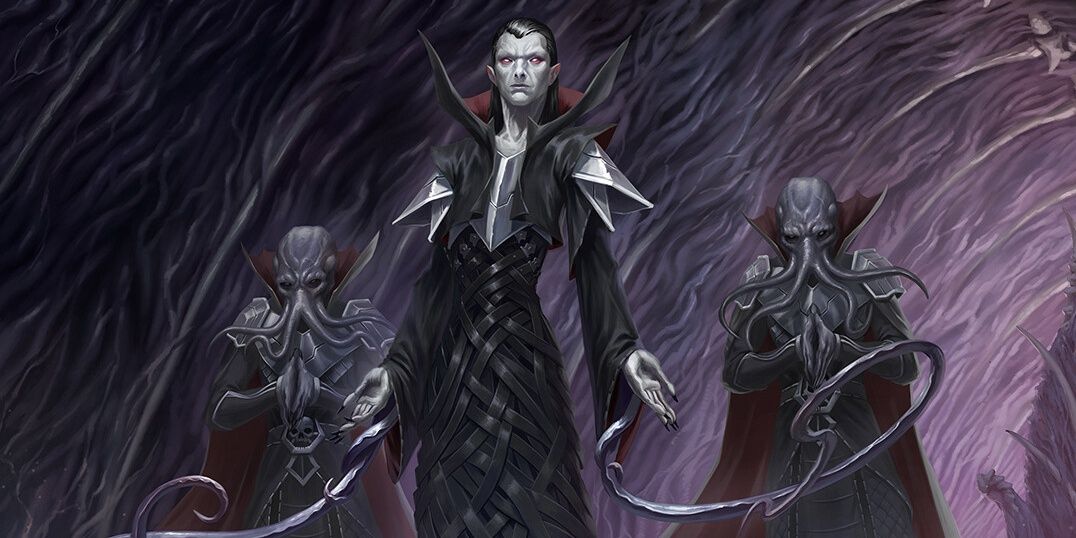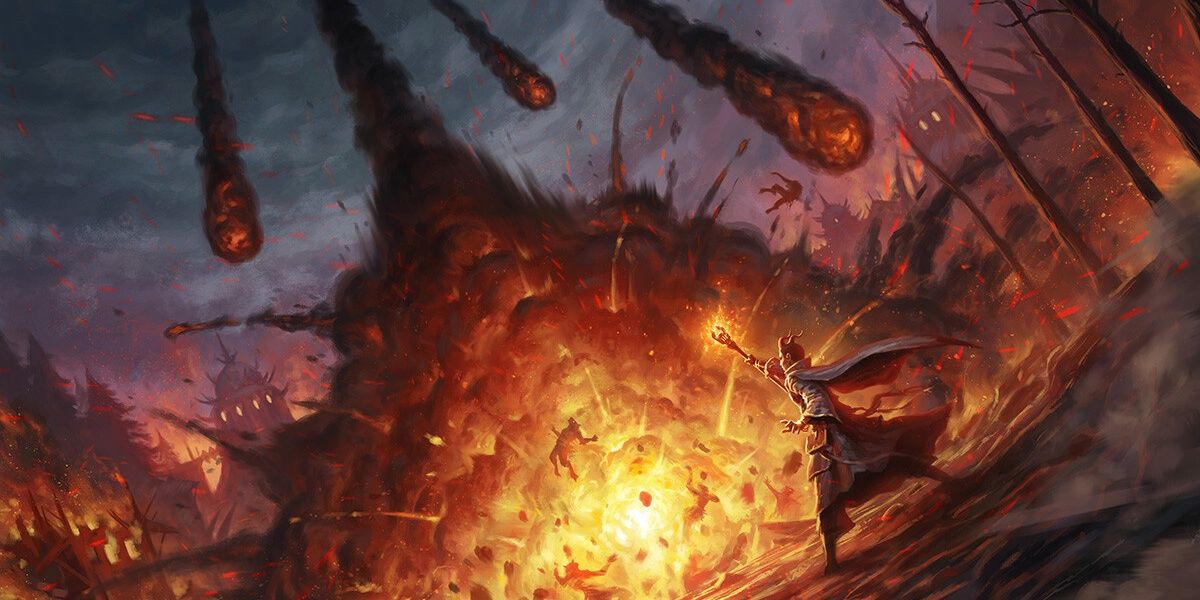Ignite the flesh of your foes with spheres of scorching flame, call upon the lightning of the heavens and sizzle their skin into char, or chill them to the bone with a blast of frigid wind. These are just a few options when considering how to deal the most damage in Dungeons & Dragons via spellcasting.
While nonmagical classes excel at one on one combat, those of a more refined magical inclination are second to none when it comes to felling a swathe of enemies. These spells will have you rolling a ton of damage dice.
Updated April 24, 2023 by Jerel Levy: Dungeons & Dragons continues to have some of the most creative and descriptive damaging spells. We've updated this article with formatting and readability to make it even easier to find and read about the best damage spells in 5e.
15 Finger Of Death
We begin with one of the most iconic spells cast by villains and their ilk, Finger of Death. This is a seventh-level necromancy spell. Despite being single target, Finger of Death does an astounding amount of damage: a large portion of which is not even rolled. A creature within 60 feet must make a Consitution saving throw. It takes 7d8+30 necrotic damage upon a failed save or half as much on a success.
Furthermore, any humanoid killed by this spell rises up as a zombie permanently under your control on your next turn. For any dungeon master looking to demoralize their players, it's hard to do much better than Finger of Death.
14 Animate Objects
With Animate Objects, you can make ten attacks in a single turn. A fifth-level transmutation spell, Animate Objects allows you to bring to life up to ten nonmagical objects within 120 feet. The stats for the objects you can make are in the spell description, but what's important is you can choose tiny objects and then make ten attacks with a range of 30 feet.
Each attack has a +8 to hit and deals 1d4+4 piercing, slashing, or bludgeoning damage depending on the object. That's a total possible 10d4+40 slashing damage. Animate Objects: why riddle your enemies with arrows when you can pincushion them with forks?
13 Disintegrate
It's a terrible thing to watch the life drain from your friend as they're assaulted by negative energy. Worse yet to then fight their risen undead corpse. But, according to the damage dealt, it's more painful to witness their body vaporized into dust. Disintegrate is a sixth-level transmutation spell that requires its target to make a Dexterity saving throw.
On a failed save, they take 10d6+40 force damage. If this damage reduces the target to zero hit points, they and their belongings are immediately disintegrated. It is important to note that this spell is all or nothing, as a creature that successfully saves takes no damage. Disintegrate can also be used to automatically destroy magical creations or objects.
12 Fireball
Fireball is an extremely powerful third-level evocation spell that was purposefully overturned by the creators of the game's own admission. Having an astounding range of 150 feet, it requires all creatures within a 20-foot radius sphere to make a Dexterity saving throw.
Targets take 8d6 fire damage on a failed save or half as much on a successful one. Fireball is sorcery recognizable by just about anyone who's ever played the game, ultimately making it more potent in the hearts and minds of your fellow players.
11 Lightning Bolt
While very similar to Fireball, Lightning Bolt is sometimes more effective due to its obscurity and damage type. It's a third-level evocation spell that requires each creature within a 100-foot line five feet wide blasting out from you to make a Dexterity saving throw.
Targets take 8d6 lightning damage on a failed save, or half as much on a success. Fire is the damage type that most creatures in the monster manual resist, so it can help to carry an alternative up your sleeve. Likewise, players and DMs alike are cautious not to stand together to avoid a fireball. But it isn't nearly as common that they will maneuver to avoid lightning bolt.
10 Cloudkill
Maybe fire and lightning aren't really your forte. Instead, you prefer to suffocate your enemies in a miasma of poisonous haze. Which is a bit dark, but, hey, it's Dungeons & Dragons. Cloudkill is a fifth-level conjuration spell with a 120-foot range. It creates a 20-foot poisonous green-yellow sphere of fog that lasts for up to ten minutes or as long as you maintain concentration.
Any creature that enters the fog for the first time or begins its turn inside it must make a Constitution saving throw, taking 5d8 poison damage on a failed save or half as much on a success. The fog moves ten feet away from you at the start of each of your turns. If you are ever able to restrict enemy movement or have them cornered in a small area, Cloudkill is one of the strongest options available.
9 Vitriolic Sphere
A favorite for more nature-minded casters. Vitriolic Sphere is a fourth-level evocation spell with a range of 150 feet. It has you throw a globule of emerald acid that explodes in a 20-foot area. Each creature inside must make a Dexterity saving throw. On a failure, targets take 10d4 acid damage and another 5d4 acid damage at the end of their next turn.
On a success, they take half the initial damage and none of the follow-up. It's an especially flavorful option, as the mechanics translate to melting your enemies as if they're the Wicked Witch Of The West.
8 Synaptic Static
Added to the game in Xanathar's Guide To Everything, Synaptic Static is the equivalent of a mental fireball. It causes an explosion of a psychic energy in a 20-foot radius sphere which requires creatures inside to make an Intelligence saving throw. Any target that fails this save takes 8d6 psychic damage, or half as much on a success. In addition, targets who fail the saving throw must roll a d6 and subtract the result from all attack rolls, ability checks, and Constitution saving throws made to maintain concentration for the next minute.
While this fifth-level enchantment spell only deals as much damage as a fireball, that's still no trivial amount of hurt. Furthermore, psychic damage is one of the most reliable damage types in the game, so you won't have to worry about creatures taking half damage due to resistance. There's also the fact that targets must make an Intelligence saving throw, which is a save most creatures and players alike are quite ill-prepared to make. Finally, the d6 debuff that this spell leaves on enemies who fail the saving throw is very good at reducing an enemy's overall effectiveness. After all, Bless is one of the best spells in the game, and the debuff this spell leaves on enemies isn't so different from it.
7 Cone Of Cold
This fifth-level evocation spell requires creatures within a 60-foot cone to make a Constitution saving throw. On a failed save, they take 8d8 cold damage or half on a successful one. This magic is roleplay friendly as any creature killed by the damage becomes a frozen statue.
Possibly transforming a band of savage enemies into your very own winter wonderland can make for some interesting scenarios, such as the party barbarian getting his tongue stuck to a frozen minotaur. Whether or not being turned into a popsicle kills your enemies outright is up to DM discretion.
6 Abi-Dalzim's Horrid Wilting
Yet another spell similar to Fireball is Abi-Dalzim's Horrid Wilting. Hailing from the often-overlooked Elemental Evil Player's Companion, this eighth-level necromancy spell can really put down the pain. Each creature in a 30-foot cube centered on a point you choose is forced to make a Constitution saving throw. On a failure, creatures take 12d8 necrotic damage, or half as much on a success.
This is a gnarly amount of damage, and the spell comes with good flavor to boot. However, Constitution saving throws is one thing most high-level creatures will be good at. On top of that, constructs and undead are completely immune to this spell, making it a risky proposition if you're unsure what kinds of enemies you're up against. Nonetheless, this spell does have its moments. For example, both plants and water elementals are forced to make their saving throws at a disadvantage, and the horrid wilting immediately destroys all nonmagical plants inside of the area it is cast. My cabbages!
5 Delayed Blast Fireball
Here's a fun twist on a classic spell that allows strategy-minded players some added depth to their spellcasting. It's a seventh-level evocation spell that places a glowing bead at a point within 150 feet. The spell's base damage is 12d6, but while you maintain concentration on the spell, the damage increases by 1d6 at the end of each of your turns. Factoring in its one-minute duration, that's a possible total of 22d6.
When you release concentration, anyone in the area must make a Dexterity saving throw taking the full accumulated damage on a failed save or half on a success. The key here is that a player may release concentration at any time, including in the middle of someone else's turn. There are hundreds of combos waiting to be unleashed using this incantation, so get crafting.
4 Crown Of Stars
This seventh-level conjuration spell is another gift from Xanathar's Guide To Everything. Crown of stars is basically Melf's minute meteors but better. When you cast this spell, seven balls of light that resemble stars begin to circle you. For the next hour, you can use a bonus action to make a ranged spell attack with one of the stars at a range of 120 feet. On a hit with one of the stars, the target takes 4d12 radiant damage.
If you somehow happen to take part in combat that lasts seven rounds (which is unlikely but possible at level 13+), Crown of Stars could theoretically deal a total of 28d12 radiant damage over the course of the fight. Did we mention that this spell doesn't require concentration?
3 Blade Of Disaster
Now we come to the best of the best: ninth-level spells. If you ever reach a high enough level to cast these spells, it's likely the only creature that could stand a chance against your party is a god of the multiverse. Nonetheless, we would be remiss, not to mention the most destructive spells in the game. Hailing from the more recent publication Tasha's Cauldron of Everything, Blade of Disaster is an often overlooked ninth-level conjuration spell that comes with some of the coolest flavor in the game. When you cast this concentration spell as a bonus action, you form a sword-shaped tear in reality with which you can make melee spell attacks.
When you cast this spell, and as a bonus action on each future turn, you can attack with the blade twice. A creature hit by the blade takes 4d12 force damage. Now, this may not seem like a lot of damage, but here's where things get interesting. Attacks made with the blade crit on a roll of 18 or higher, and when the blade crits, it deals an additional 8d12 force damage. That's a total of 12d12 force damage per hit. In other words, this spell can deal 24d12 force damage as a bonus action when you cast it and on each subsequent turn, assuming you maintain concentration.
While this might seem like a stretch, certain builds can accomplish it. Believe it or not, an elf character with the feat elven accuracy who makes both of their attacks with advantage has an over 50 percent chance to crit at least once with this blade. Niche? Certainly. Beyond cool? You bet.
2 Psychic Scream
Yet another present from Xanathar's Guide To Everything, Psychic scream is a ninth-level enchantment spell that forces ten creatures of your choice within 90 feet to make an Intelligence saving throw. Creatures who fail this save take 14d6 psychic damage and become stunned. Meanwhile, creatures somehow lucky enough to succeed still take half damage.
Unlike most spells that stun, psychic scream then requires each creature who becomes stunned by it to succeed on another Intelligence saving throw at the end of each turn. As long as the creature continues to fail this save, they remain stunned. In other words, psychic scream often serves as a multi-round stun against most creatures. In case you forgot, stunned is one of the worst status conditions you can inflict on an enemy as it grants advantage on all attack rolls against the target, makes the target automatically fail Strength and Dexterity saving throws, and leaves the target incapable of taking actions or reactions. By the way, it's mentioned in the spell description that any creature who is killed by psychic scream has its head explode in a shower of gore. So, there's also that.
1 Meteor Swarm
Meteor Swarm is undeniably the most destructive spell in the game. It's a ninth-level evocation spell with a range of one mile that requires each creature within a 40-foot radius of four points you choose to make a Dexterity saving throw. On a failed save, they take 20d6 fire damage and 20d6 bludgeoning, or half as much on a success.
Meteor swarm is powerful enough to level a good-sized town. And you can bet the surviving citizens – assuming there are any – will be bowing down before their new deity faster than you can say fireball.

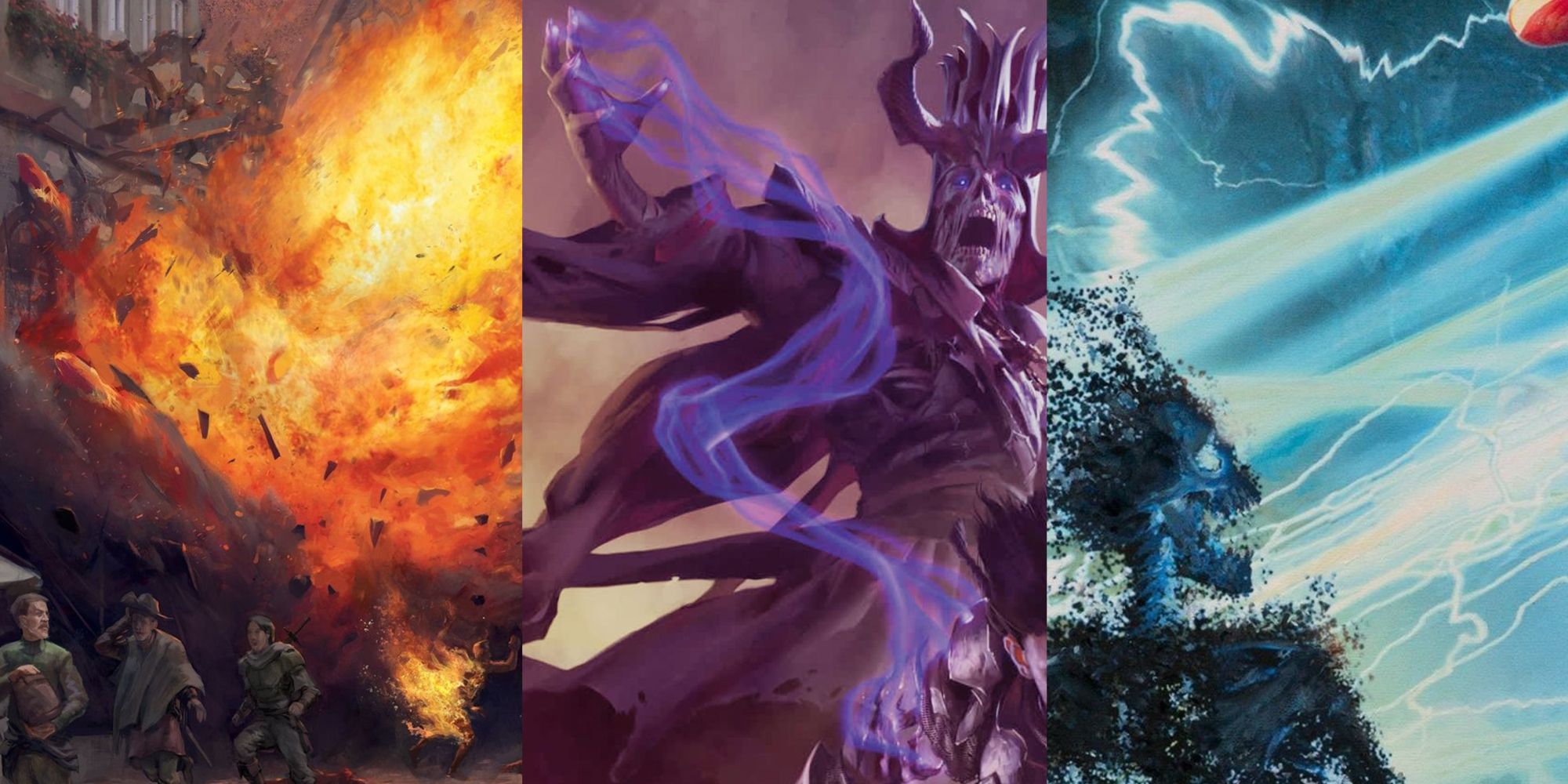
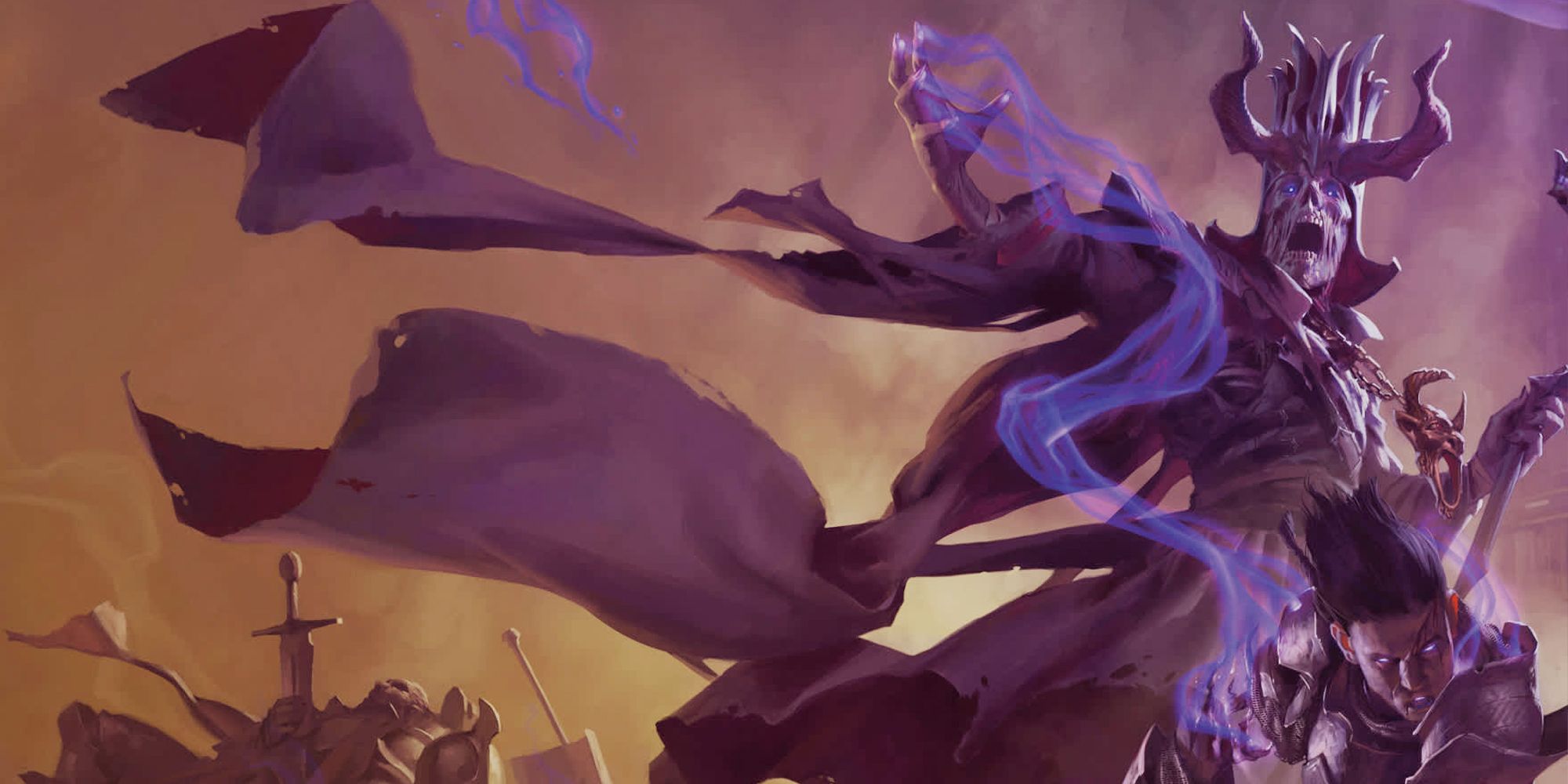
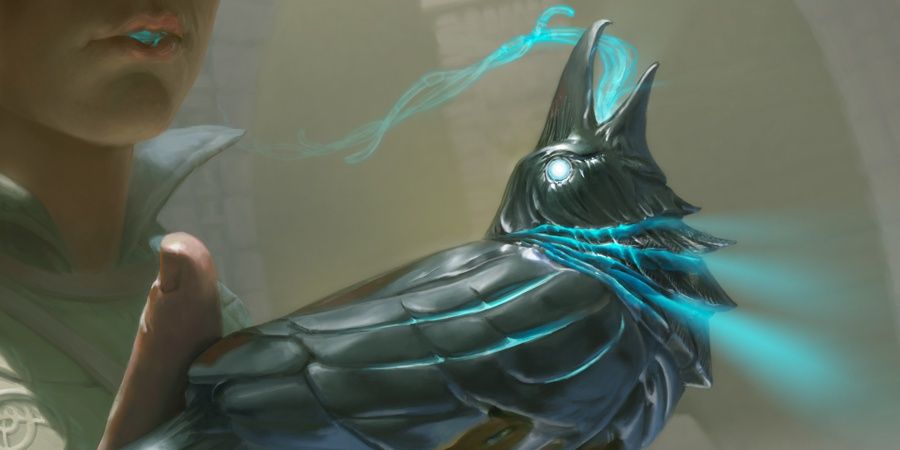
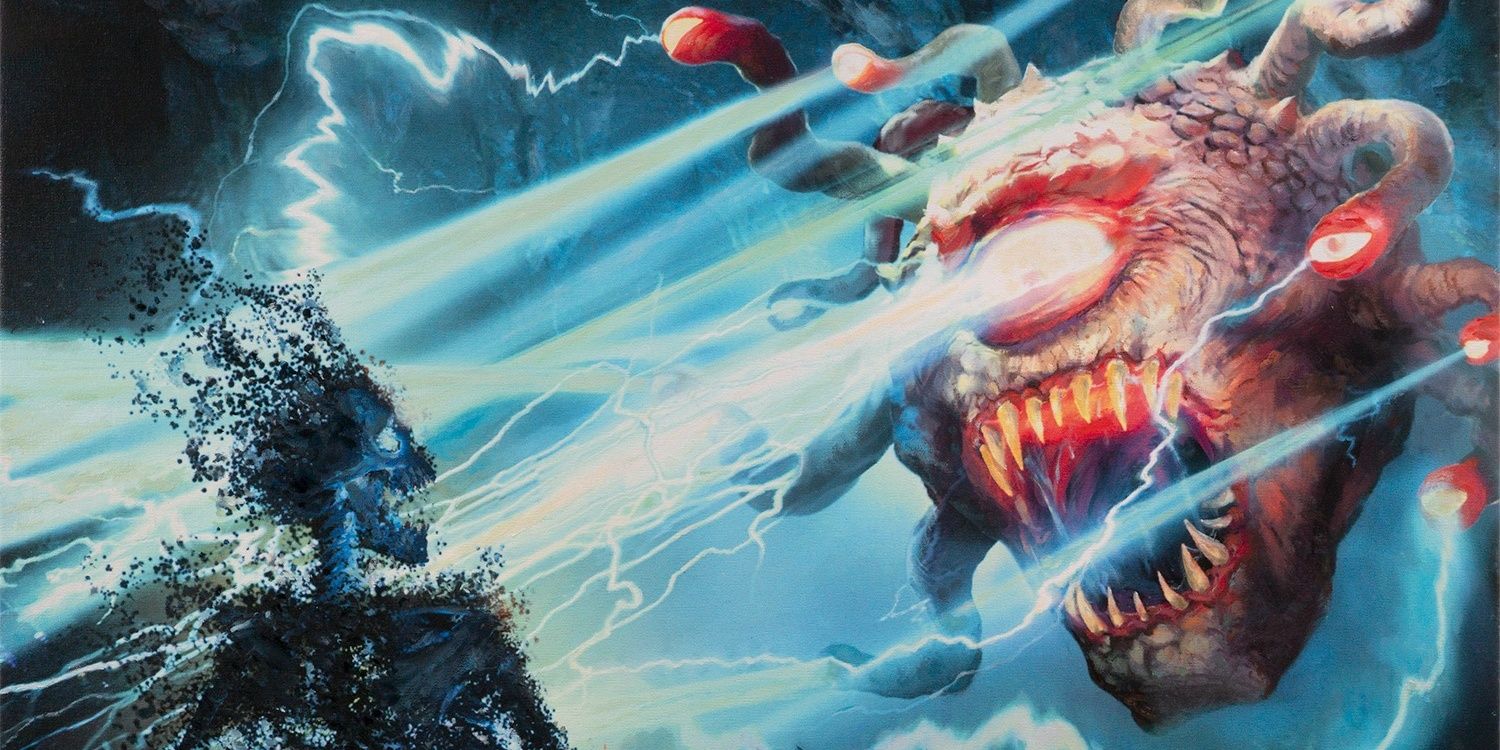
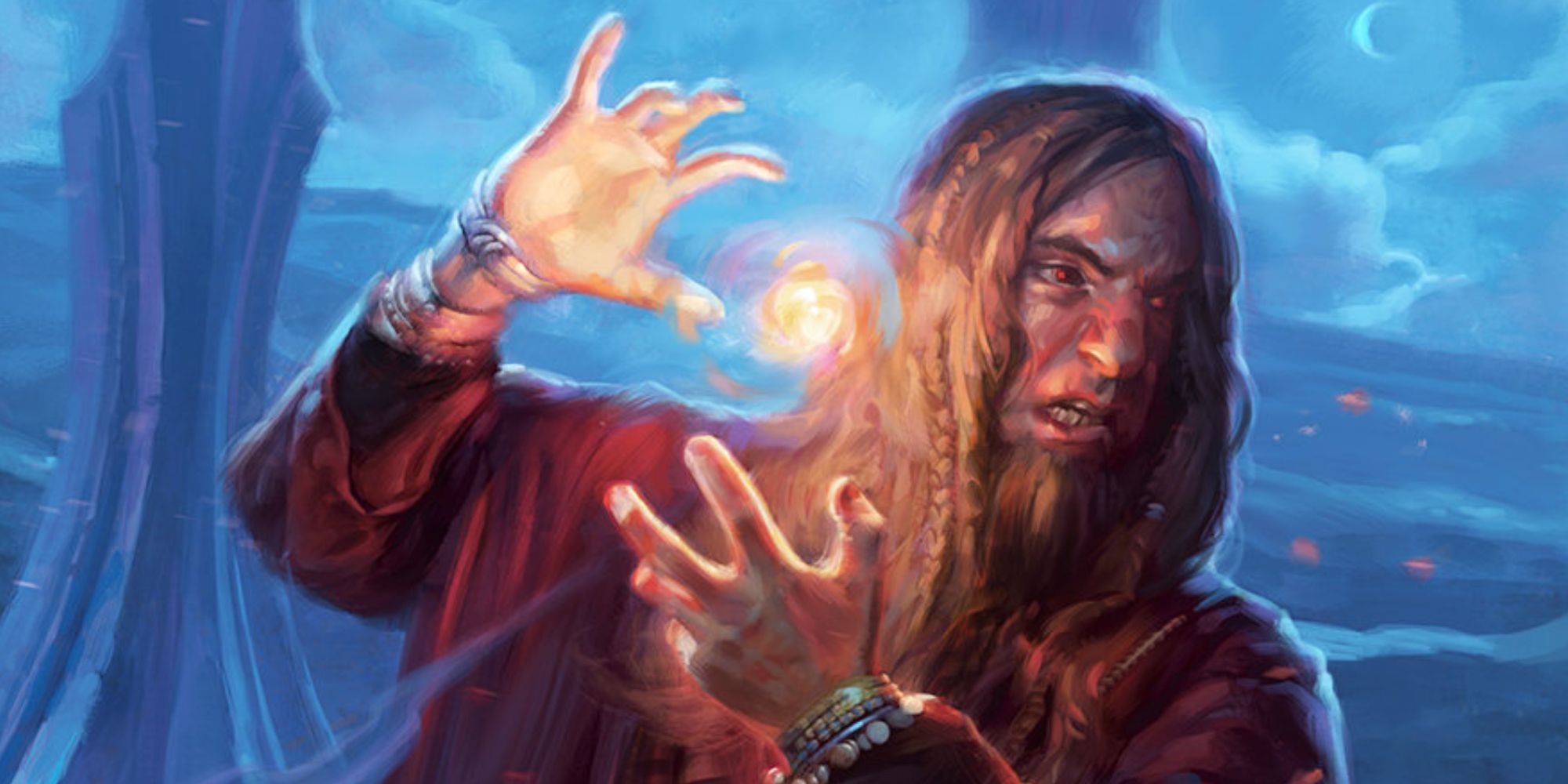
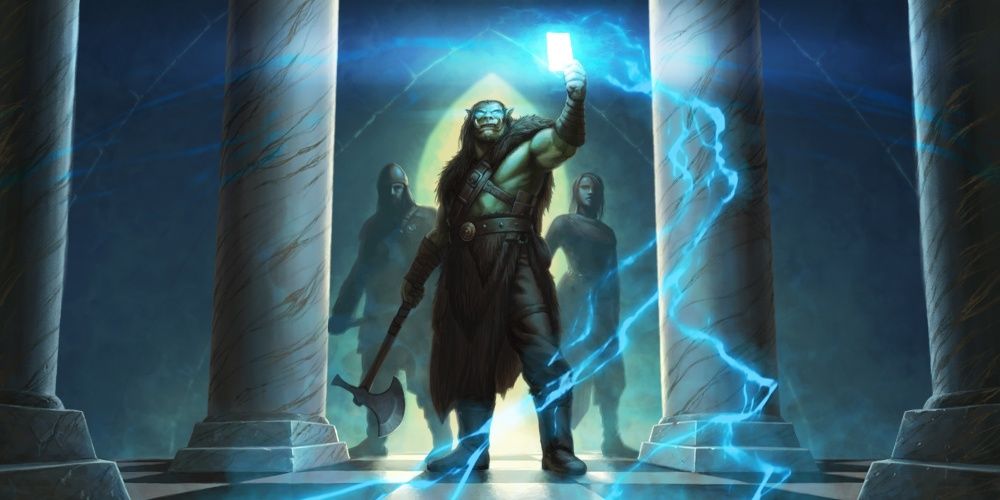
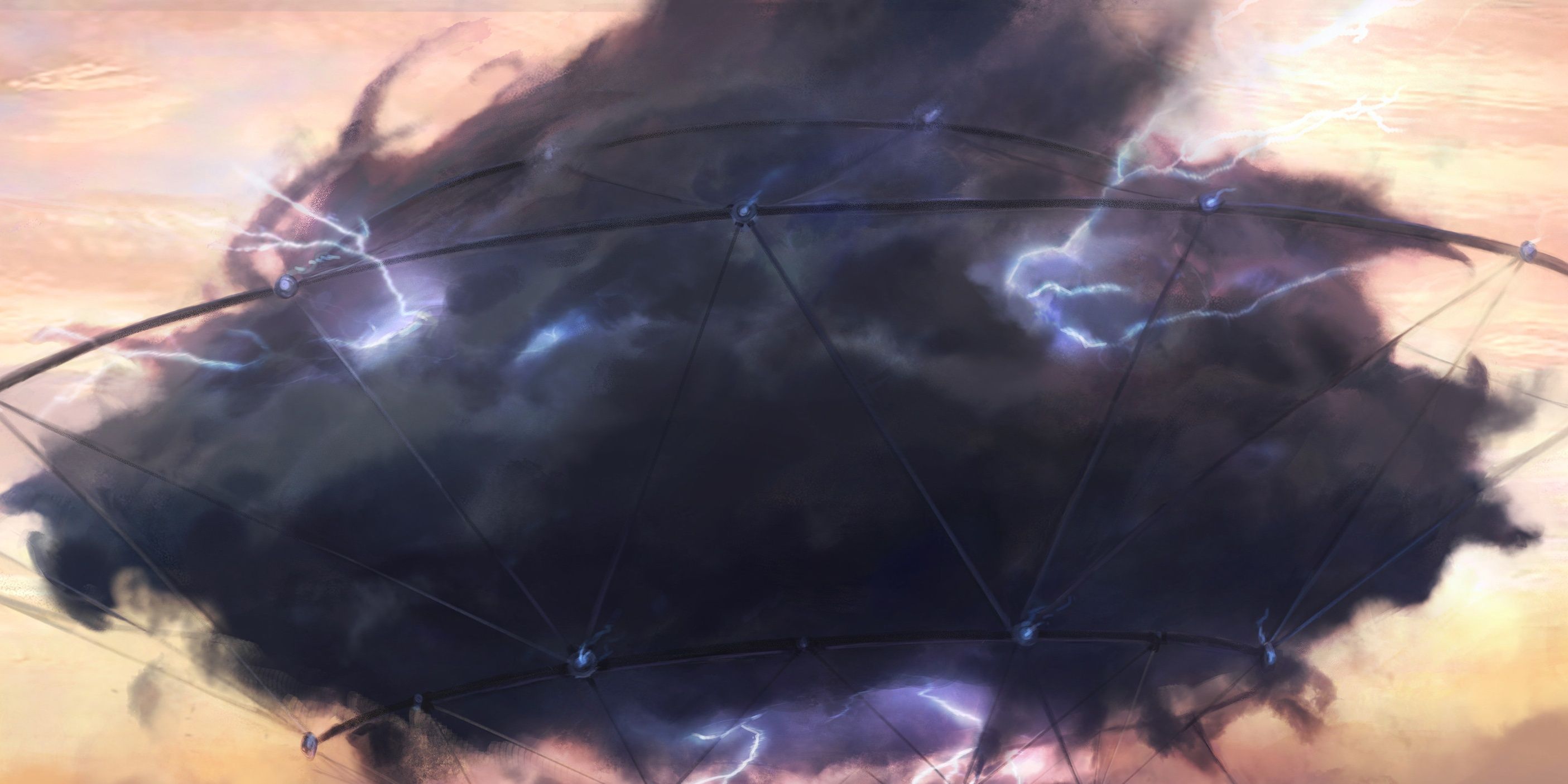
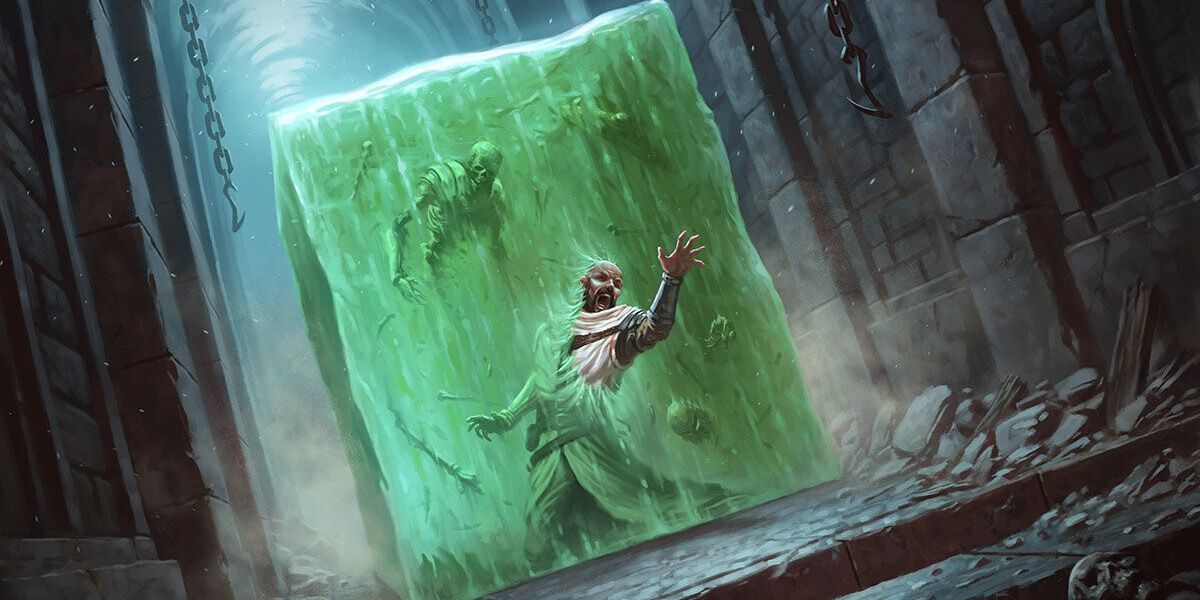
-by-Ralph-Horsley-Cropped.jpg)
